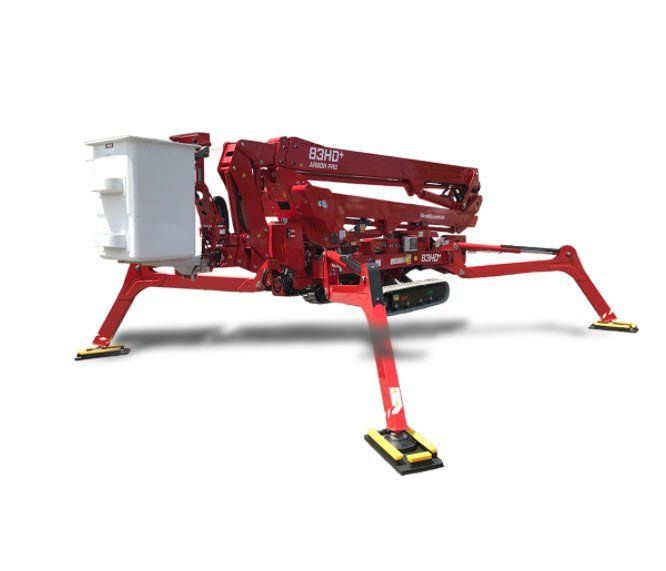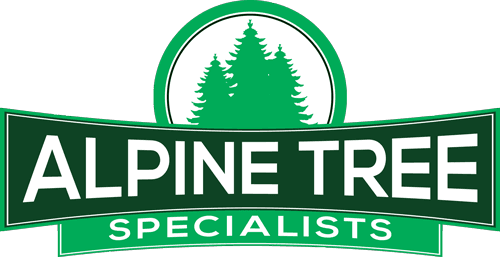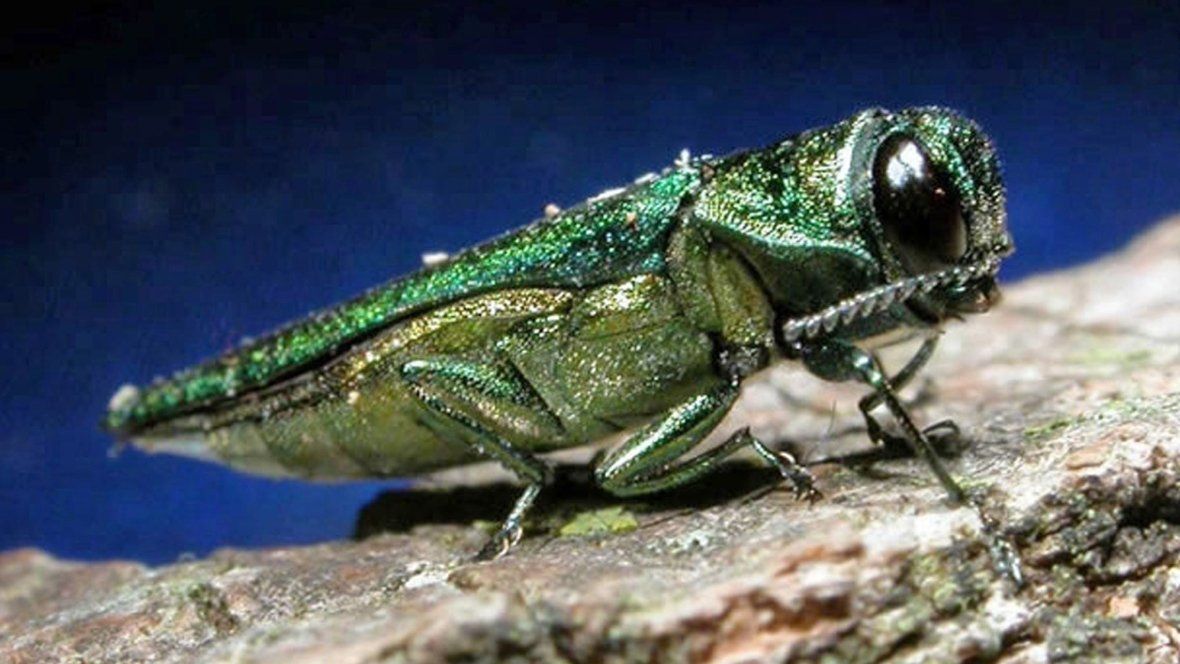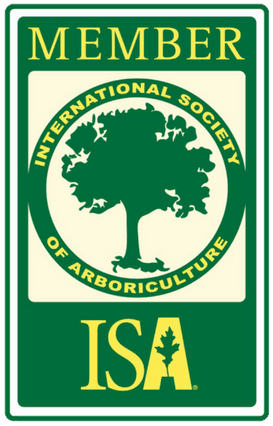What is it?
Originally from Asia, the emerald ash borer (EAB) was first discovered in the Detroit area in 2002. It is believed to have entered the country on wooden packing materials from China. The bright metallic-green beetle may be smaller than a dime, but it is capable of taking down ash trees thousands of times its size. Adults are typically ½ inch long and ⅛ inch wide. Eggs are extremely small—approximately 1/25 inch—and are reddish-brown in color. Larvae are white, flat-headed borers with distinct segmentation.
Adults usually emerge in mid- to late-May from infestations to the trees during the previous year (earlier if the weather is warm), with females laying their eggs shortly after. The larvae bore into the ash tree and feed under the bark, leaving tracks visible underneath. The feeding disrupts the tree’s ability to transport water and nutrients, resulting in dieback and bark splitting.
Know the Symptoms and Signs
The bugs are all over our areas and it's likely that your Ash trees are effected. Don't delay taking action. All species of Ash are susceptible.
Symptoms
Crown dieback: Dieback of the upper and outer crown begins after multiple years of EAB larval feeding. Trees start to show dead branches throughout the canopy, beginning at the top. Larval feeding disrupts nutrient and water flow to the upper canopy, resulting in leaf loss. Leaves at the top of the tree may be thin and discolored. An example of this is shown below.
Epicormic Sprouting: When trees are stressed or sick, they will try to grow new branches and leaves wherever they still can. Trees may have new growth at the base of the tree and on the trunk, often just below where the larvae are feeding. An example of this is shown in the picture above, where small branches are growing on the trunk, about 6 feet off the ground.
Bark splits: Vertical splits in the bark are caused due to callus tissue that develops around larval galleries. Larval galleries can often be seen beneath bark splits.
Woodpecker feeding: Woodpeckers eat emerald ash borer larvae that are under the bark. This usually happens higher in the tree where the emerald ash borer prefers to attack first. If there are large numbers of larvae under the bark the woodpecker damage can make it look like strips of bark have been pulled off of the tree. This is called "flecking." An example of this is shown below.
Signs
D-shaped emergence holes: As adults emerge from under the bark they create a D-shaped emergence hole that is about 1/8 inch in diameter. An example of this is shown below.
S-shaped larval galleries: As larvae feed under the bark they wind back and forth, creating galleries that are packed with frass (larva poop) and sawdust and follow a serpentine pattern. An example of this is shown below.
Larvae: Larvae are cream-colored, slightly flattened (dorso-ventrally) and have pincher-like appendages (urogomphi) at the end of their abdomen. By the time larvae are done growing they are 1 1/2 inches long. Larvae are found feeding beneath the bark.
Adults: Adult beetles are metallic green and about the size of one grain of cooked rice (3/8 - 1/2 inch long and 1/16 inch wide). Adults are flat on the back and rounded on their underside.
Most trees die within 2 to 4 years of becoming infested
The ash tree dies by drying out, because the borers cut off the vessels that carry moisture out to the branches so the wood is already brittle before the tree is dead. The tree becomes extremely hazardous and can drop limbs or completely fall down damaging property and endangering people. The longer you wait, the more dangerous the removal become which will result in a higher cost. You should have your dying Ash trees removed promptly. EAB infested trees should only be removed by a professional. We specialize in removing these trees so please schedule an estimate as soon as you see the signs.




